When I wake up then the sun is still on the other side of the mountain and there are eight
tourist buses waiting at the port.
I pay a visit to the bakery and
start the same way as yesterday until Moni Evangelistria. At the
beginning of monopati are four young man busy with clearing the path.
They are obviously part of the movement 'back to our paths'. From the
moni today's path continues on the other side of the amphitheater and
through the mountain ridge. I scare a lot of brown birds to fly away and a
long slim snake crosses the road. On the other side of the mountain is
green wide valley with solitary trees. Make a picnic stop in a shady
place. On the opposite side buses full of tourists move down the road.
Path meets with asphalt, sun hits with heat.
A mountain consisting of colorful rocks catches my attention. A tiny sign says ’geological site No 8’. In Spanish there are ’holes of smoke’. Here somewhere should be two more craters. All together there are five, most people visit only the biggest, Stefanos. On the ground is lot of bright yellow stone and it smells heavily of rotten eggs. Here and there rises smoke. I climb up on loose stones and finally see two big holes on the other side. Megalos Polyvotis. Here the craters are not mountain-shaped like Vesuvius but holes in the ground. A guy runs to the crater, takes a photo and runs back. He also has the possibility of admiring me on my watch post. The bus already signals. I climb down and walk between the two craters. Lot of smoke. In the other hole is something that looks like mud. Creepy.
I don’t get the Alexandros crater. Some vaults in the ground.
The main thing or Stefanos crater is a giant hole in the middle of the valley. A path takes you to the bottom. Cracks give out smoke and it bubbles loudly somewhere. It’s hot. The earth crust should at places be only 20 cm thick. Wouldn’t want to stand on that place. In the center is boiling mud. Last eruption of the volcano was 1888 but something might have been going on also during the 1933 earthquake. I leave the boiling kettle quickly to get back to the wind.
At the rim of the crater two hippies have a café and sell photos. The young lady says that she’s a local and the best time for taking pictures is winter. Most people buy the crater panorama. I take water-drops after storm. Just because she sees her home as being beautiful.
The path continues to the other side of the valley. Through turkeys and pigs. Monopati is here supposed to be a bit overgrown and it takes ’a practiced eye of an island hiker’ to recognize it. I spot it now and then but the last stretch is spent climbing wildly over terraces. Must practice the eye. Further is gravel road, strong wind and Astypalea visible over the water. Part of the sea seems to be floating above horizon. At the end there’s monopati again.
The balcony of my room is occupied by small black cats.
A mountain consisting of colorful rocks catches my attention. A tiny sign says ’geological site No 8’. In Spanish there are ’holes of smoke’. Here somewhere should be two more craters. All together there are five, most people visit only the biggest, Stefanos. On the ground is lot of bright yellow stone and it smells heavily of rotten eggs. Here and there rises smoke. I climb up on loose stones and finally see two big holes on the other side. Megalos Polyvotis. Here the craters are not mountain-shaped like Vesuvius but holes in the ground. A guy runs to the crater, takes a photo and runs back. He also has the possibility of admiring me on my watch post. The bus already signals. I climb down and walk between the two craters. Lot of smoke. In the other hole is something that looks like mud. Creepy.
I don’t get the Alexandros crater. Some vaults in the ground.
The main thing or Stefanos crater is a giant hole in the middle of the valley. A path takes you to the bottom. Cracks give out smoke and it bubbles loudly somewhere. It’s hot. The earth crust should at places be only 20 cm thick. Wouldn’t want to stand on that place. In the center is boiling mud. Last eruption of the volcano was 1888 but something might have been going on also during the 1933 earthquake. I leave the boiling kettle quickly to get back to the wind.
At the rim of the crater two hippies have a café and sell photos. The young lady says that she’s a local and the best time for taking pictures is winter. Most people buy the crater panorama. I take water-drops after storm. Just because she sees her home as being beautiful.
The path continues to the other side of the valley. Through turkeys and pigs. Monopati is here supposed to be a bit overgrown and it takes ’a practiced eye of an island hiker’ to recognize it. I spot it now and then but the last stretch is spent climbing wildly over terraces. Must practice the eye. Further is gravel road, strong wind and Astypalea visible over the water. Part of the sea seems to be floating above horizon. At the end there’s monopati again.
The balcony of my room is occupied by small black cats.

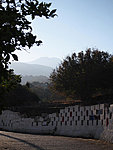
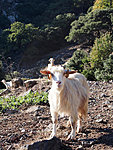
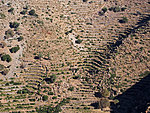

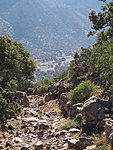

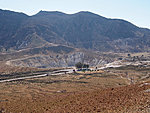
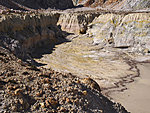
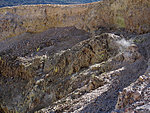
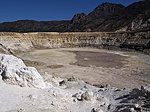
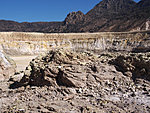
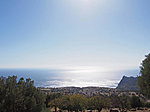
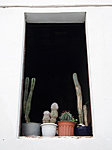
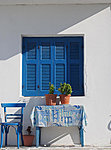
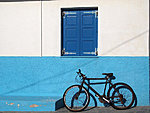

Add a comment